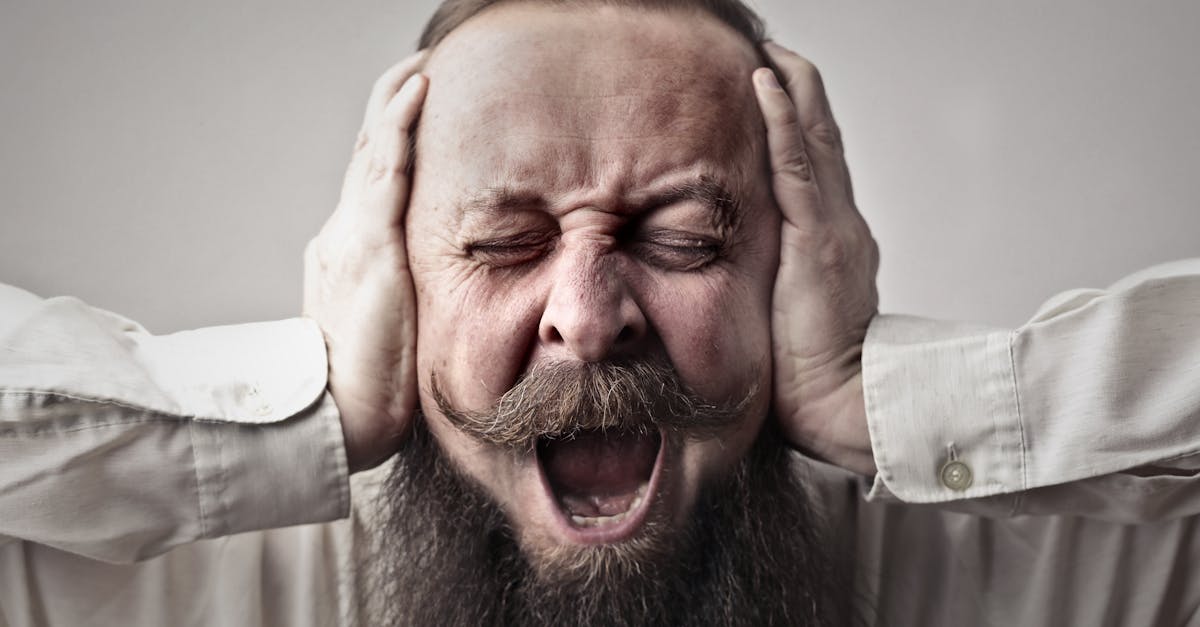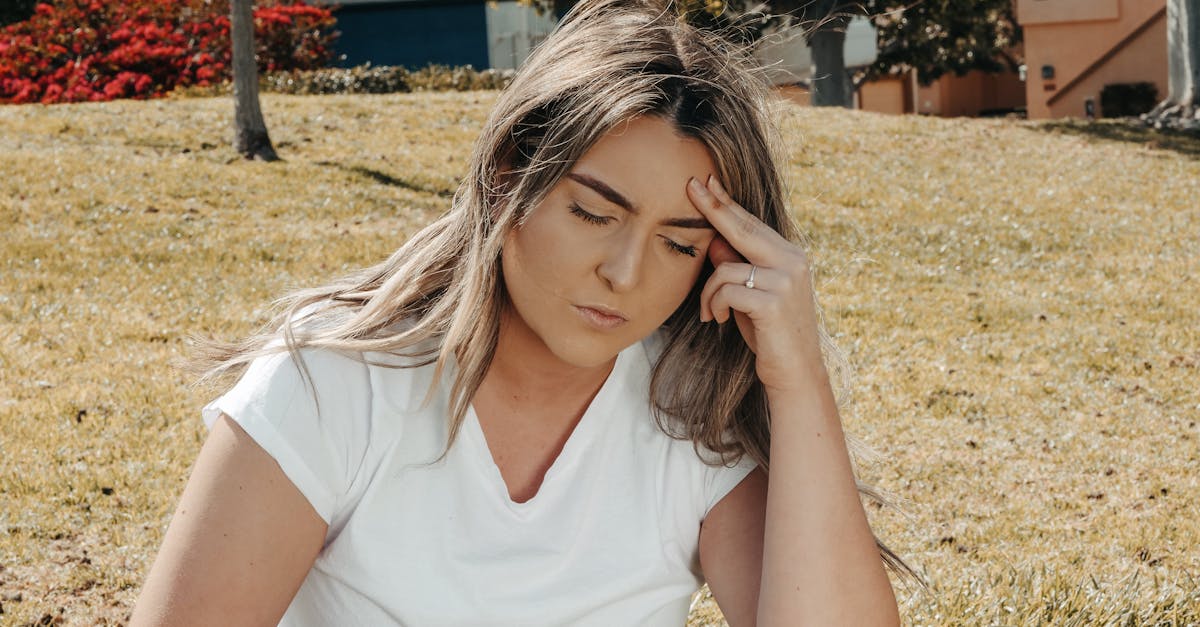|
In Short, daily yoga and meditation practices are holistic techniques aimed at alleviating migraines by fostering both physical and mental well-being. These methods enhance emotional regulation and reduce stress, which are key triggers for migraine attacks. By incorporating practices such as mindful breathing and targeted yoga poses, individuals can decrease the frequency and intensity of their symptoms. Moreover, this approach helps in improving overall blood circulation and muscle relaxation, providing a comprehensive strategy for migraine management. |
Daily yoga and meditation practices have proven to be powerful techniques for alleviating migraines. Incorporating mindful breathing and targeted yoga poses helps reduce both the frequency and intensity of headache episodes. These methods not only promote emotional regulation but also enhance blood circulation, leading to a holistic approach that empowers individuals to manage their pain effectively. Regular practice fosters greater awareness of bodily sensations, allowing those affected by migraines to develop coping strategies that alleviate their debilitating symptoms.

Welcome to Pulse Align: Your Path to Wellness and Balance
At Pulse Align, we believe that everyone deserves to experience a sense of well-being that resonates throughout their day-to-day life. Our innovative approach employs gentle, imperceptible pulses that help the body restore its natural balance and posture. This unique method fosters an environment where the body’s inherent abilities can shine, leading to a reduction in muscle and joint tension while promoting overall comfort and vitality.
The Gentle Approach to Recalibration
Pulse Align focuses on helping the body recalibrate itself rather than addressing specific discomforts directly. Our philosophy emphasizes empowering clients to regain a sense of symmetry and improve posture through our gentle techniques. This harmonious recalibration often naturally leads to a sense of ease and balance, enhancing the overall experience in your daily activities.
Personalized Experiences and Client Testimonials
At Pulse Align, we recognize that each client’s journey is unique. Our personalized approach ensures that we cater to individual needs, fostering a supportive environment. Clients have shared their inspiring experiences, noting significant improvements in neck and back tension as well as postural balance. The feedback regarding our family-friendly services highlights the positive impact on both adults and children alike, making Pulse Align a trusted partner in wellness.
Explore Your Wellness Journey Today
We invite you to visit the Pulse Align website to discover more about how our gentle, non-invasive approach can benefit you and your family. With locations in cities such as La Prairie, Mont-Royal, and Terrebonne, we are ready to assist you in your wellness journey. Remember, while Pulse Align complements existing health services, it’s essential to remain connected with your healthcare team for comprehensive support. Book a consultation today and experience the safe, family-friendly approach that Pulse Align offers!
- Paced Breathing: Focus on deep, rhythmic breaths to reduce stress and enhance relaxation.
- Mindfulness Meditation: Engage in present-moment awareness to improve emotional control over pain.
- Gentle Yoga Poses: Incorporate poses like Child’s Pose and Cat-Cow to relieve neck and shoulder tension.
- Progressive Muscle Relaxation: Systematically relax muscle groups to diminish overall tension.
- Guided Meditation: Utilize guided sessions that center on relaxation and visualizations to ease migraine symptoms.
- Yoga Breathing Exercises: Practice Pranayama techniques to enhance blood circulation and alleviate discomfort.
- Tension Release Techniques: Incorporate stretches that help release muscle tension throughout the day.
- Daily Mindfulness Practice: Establish a routine that includes mindfulness to build resilience against migraine triggers.

Migraines can impose significant challenges to daily life, affecting productivity and overall quality of life. However, incorporating daily yoga and meditation practices can provide effective tools for migraine management. These holistic approaches not only enhance physical well-being but also strengthen emotional resilience, empowering individuals to handle migraine triggers more effectively. Below, we explore various techniques that can be seamlessly integrated into a daily routine to help alleviate migraine symptoms.
The Role of Mindful Meditation
Mindfulness meditation is a powerful technique that trains practitioners to focus on the present moment without judgment. This practice can shift the perception of pain and create an emotional distance from discomfort. By incorporating short meditation sessions into daily routines, individuals can cultivate a greater awareness of their body’s responses to stress and pain. This heightened awareness allows for better emotional regulation, which is crucial in mitigating the intensity of migraine attacks.
Starting with Brief Sessions
Beginning with just five to ten minutes of meditation daily can yield significant benefits. Focus on deep, rhythmic breathing while allowing thoughts to pass without engaging with them. This practice encourages a calming of the mind, often resulting in reduced anxiety and less likelihood of a migraine trigger.
Incorporating Yoga into Daily Life
Yoga, a practice that combines physical postures and breathing exercises, helps in alleviating muscle tension and promoting relaxation—key factors for migraine relief. Specific yoga poses can target areas commonly affected by migraines, such as the neck and shoulders. By incorporating these poses into a daily routine, individuals can improve their muscle tone and promote a sense of overall well-being.
Essential Yoga Poses for Migraine Relief
1. Child’s Pose: This restorative pose encourages relaxation of the neck and back, promoting deep breathing and releasing tension.
2. Cat-Cow Stretch: This dynamic sequence enhances spinal flexibility and encourages blood flow to the brain, which can help ease headache symptoms.
3. Legs-Up-the-Wall Pose: This inversion pose supports blood circulation and alleviates tension in the lower back, providing relief that can extend to the head and neck regions.
Breathing Techniques for Stress Management
Deep breathing exercises are integral to both yoga and meditation practices. Techniques such as paced breathing not only promote relaxation but also reduce stress levels, known to be a primary trigger for migraines. By focusing on controlling breath patterns, individuals can ground themselves during particularly stressful moments.
Methods for Effective Breathing
Incorporate diaphragmatic breathing into your practice, where focus is placed on deep and intentional inhalations and exhalations. A few minutes of paced breathing can invigorate the body and relax the mind, ultimately reducing the risk of a migraine onset.
Building a Consistent Routine
Establishing a daily routine that intentionally includes yoga and meditation can create a solid foundation for migraine management. Regular practice fosters a deeper understanding of one’s body and its triggers, leading to more empowered responses during migraine episodes.
Tracking Personal Progress
Keeping a journal to monitor symptoms and responses to yoga and meditation can aid in tailoring practices according to individual needs. Identifying specific triggers and noting the effectiveness of various techniques allows for a more personalized approach to migraine relief.
By nurturing both physical and emotional health through consistent yoga and meditation practices, individuals can cultivate resilience against migraine challenges. As this holistic approach emphasizes health beyond symptoms, it aligns beautifully with the principles of Pulse Align, promoting neuromuscular health and the recalibration of the nervous system. Embracing these practices can pave the way toward a life filled with balance, comfort, and well-being.
| Practice | Benefits |
|---|---|
| Paced Breathing | Promotes relaxation and helps to create a calm atmosphere, encouraging natural balance. |
| Mindfulness Meditation | Enhances emotional clarity, allowing individuals to reconnect with their body’s needs. |
| Child’s Pose | Encourages gentle stretching, aiding in relaxation and stress reduction. |
| Cat-Cow Stretch | Improves flexibility and encourages proper alignment, fostering overall body harmony. |
| Legs-Up-the-Wall Pose | Facilitates a feeling of grounding, promoting a sense of ease and tranquility. |
| Guided Meditation | Offers a structured approach to relaxation, enhancing mental focus and support. |
| Progressive Muscle Relaxation | Systematic relaxation helps to alleviate tension, contributing to a balanced mindset. |
| Yoga Breathing Exercises (Pranayama) | Boosts oxygen flow, fostering a deep connection between body and breath. |
| Visualization Techniques | Supports mental clarity and fosters positive imagery to aid emotional resilience. |
| Daily Routine Integration | Establishing a consistent practice encourages ongoing wellness and self-awareness. |

Transformative Wellness Journey Through Daily Yoga and Meditation
Clients at Pulse Align often share their inspiring stories about how daily yoga and meditation practices have significantly alleviated their migraines, emphasizing the powerful benefits of this holistic approach. Many have expressed gratitude for discovering a path that enhances their natural ability to recalibrate and restore balance within their bodies. This unique method promotes muscle tone symmetry and better posture, helping individuals reclaim their lives from the grip of chronic pain.
In La Prairie, clients have embraced the transformative effects of incorporating these practices into their routines. They report feeling lighter and more aligned, which translates into reduced migraine frequency and intensity. The gentle, supportive environment that Pulse Align creates allows individuals to explore their own bodies while encouraging healing and comfort.
Additionally, clients from Mont-Royal have described how integrating yoga into their daily lives not only aids in managing headaches but also fosters an overall sense of well-being. They highlight the personalized care received at Pulse Align, which works in tandem with their healthcare teams to ensure a comprehensive approach to wellness.
Those in Terrebonne have noted that the innovative techniques offered at Pulse Align complement their traditional health practices. Many clients share positive feedback as they experience physical and emotional improvements, underscoring the effectiveness of yoga and meditation in their wellness journeys.
Chicoutimi residents, in particular, have found immense value in these mindful practices, often expressing how they help to manage stress and emotional responses linked to migraines. The commitment of Pulse Align to support clients in a nurturing community is evident in every success story shared.
Furthermore, individuals from Châteauguay and Saint-Jérôme have reported significant strides in their ability to cope with migraines. The incorporation of gentle breathing exercises and relaxation techniques has proven vital for many in navigating their daily lives with greater ease and resilience.
Clients from locations like Deux-Montagnes and Sainte-Marie have started to regularly attend sessions focused on daily yoga and meditation. They consistently acknowledge the comprehensive wellness support they receive from Pulse Align, which helps to align their physical wellness with mental strength.
By blending these holistic practices with existing healthcare protocols, Pulse Align is dedicated to offering a supportive, non-invasive approach for managing migraines. For those interested in exploring such transformative services, we invite you to visit our Our Clinics page to find a location near you and take the first step towards improving your well-being through innovative wellness solutions.
Migraines can significantly impede daily life, affecting work, social interactions, and overall well-being. For individuals seeking relief, incorporating regular yoga and meditation practices into their routine can serve as a powerful natural approach to managing migraine symptoms. These techniques promote both physical and mental health, creating a holistic foundation for migraine alleviation.
Yoga offers various benefits that can aid in reducing the intensity and frequency of migraines. Through a combination of physical postures, breathing techniques, and relaxation exercises, yoga helps to alleviate muscle tension and promote blood circulation. Specific poses, such as Child’s Pose and Cat-Cow Stretch, can particularly alleviate neck and shoulder tension, which are often associated with headache triggers. As practitioners engage in these poses, they not only improve flexibility and strength but also foster a deeper connection to their bodies, enhancing awareness of pain signals.
Mindful breathing is another critical aspect of yoga. By learning to control breath patterns, individuals can activate the body’s relaxation response, which counters the stress response that often contributes to migraine onset. This slow, focused breathing serves to calm the nervous system, reducing overall anxiety and tension that may trigger headaches. Moreover, consistent practice can lead to long-term improvements in emotional regulation, significantly benefiting those who suffer from chronic migraines.
Meditation, especially mindfulness meditation, is instrumental in retraining the brain’s perception of pain. By directing attention to the present moment, individuals can cultivate a greater sense of calm and reduce the emotional impact of pain. Research has shown that regular meditation leads to increased emotional resilience, fostering a proactive rather than reactive approach towards pain management. Engaging in guided meditation sessions focused specifically on pain relief can enhance the benefits, providing patients with tailored strategies to navigate discomfort during migraine episodes.
Dr. Sylvain Desforges, a notable figure in holistic healthcare, emphasizes the importance of integrating such practices into a comprehensive pain management plan. As the founding president of TAGMED clinics and the ACMA association, he has dedicated his career to advancing healthcare innovation. His expertise spans osteopathy, naturopathy, and manual medicine, with a focus on chronic pain management and the integration of advanced methodologies such as spinal decompression and shockwave therapy. Dr. Desforges is committed to providing evidence-based care that optimizes the health and well-being of his patients.
In his clinics, located in communities like Mont-Royal, Montréal, and Terrebonne, Dr. Desforges combines traditional healing practices with cutting-edge technology to address various health concerns. His mission is clear: to enhance patient quality of life through innovative treatments that encompass both physical interventions and lifestyle modifications. He encourages patients to explore the profound impact that daily yoga and meditation can have on their overall health, particularly in relation to migraine management.
Through the combination of yoga, meditation, and expert guidance from practitioners like Dr. Desforges, individuals suffering from migraines can take proactive steps towards reclaiming their health. These practices not only help in alleviating pain but also promote a holistic sense of well-being, empowering individuals to navigate their daily challenges with greater ease. Embracing a lifestyle that includes regular yoga and meditation can bring forth a lasting transformation in managing migraines, leading to a more balanced and fulfilling life.
Understanding TAGMED’s Neurovertebral Decompression Technique
Mechanism of Action
The neurovertebral decompression technique developed by TAGMED operates by applying a precise and controlled traction force along the spine. This mechanical action creates an increase in the space between the vertebrae, effectively reducing the pressure on intervertebral discs and spinal nerve roots. As a result, this method enhances fluid circulation in the targeted area.
Reducing pressure on the discs and nerve roots not only alleviates discomfort but also aids in diminishing inflammation within the spinal region. The improved circulation helps transport essential nutrients necessary for recovery while simultaneously removing waste products from the area. This comprehensive approach contributes to significant pain relief for individuals suffering from conditions like herniated discs, bulging discs, and moderate to severe spinal or foraminal stenosis.
Specific Benefits
This non-invasive method has been shown to effectively relieve chronic pain and symptoms associated with various spinal disorders. By alleviating pressure on neural structures, TAGMED’s technique facilitates a more comfortable healing process. Patients typically report an improved quality of life as the technique not only reduces pain levels but also optimizes the flow of bodily fluids around the affected discs.
Moreover, the reduction of pressure allows for better functionality in daily activities, enabling patients to regain a sense of normalcy without the constraints imposed by chronic pain. Users of the neurovertebral decompression technique often observe an expedient recovery period and an overall enhancement in their well-being, complementing other health practices aimed at managing migraine conditions as discussed in “Daily Yoga and Meditation Practices to Alleviate Migraines.”
Comparison with Other Treatments
When compared to conventional treatments often prescribed for similar spinal issues, the neurovertebral decompression technique stands out. Traditional methods may include analgesics, corticosteroid injections, surgical interventions, and standard physical therapy. However, these alternatives often carry inherent risks and long recuperation times.
TAGMED’s technique is non-invasive, substantially minimizing the risks associated with surgical procedures while eliminating the side effects frequently linked with pharmacological treatments. Patients often report quicker and more substantial pain relief through neurovertebral decompression than through more invasive methods, thus showcasing a distinct advantage.
Case Studies or Testimonials
Numerous patients have experienced significant benefits from TAGMED’s technique. For example, one patient who previously depended on daily medication for chronic back pain noted a remarkable reduction in discomfort after several sessions with the decompression technology. The individual reported a lasting decrease in pain, allowing for a return to regular activities that once seemed challenging. Another patient shared their success story with reduced reliance on medications after integrating the neurovertebral decompression into their treatment plan.
These testimonials underscore the effectiveness of the neurovertebral decompression technique in managing chronic pain and improving patients’ experiences significantly, ensuring that they can pursue a more active and fulfilling life.
Incorporating daily yoga and meditation practices into your routine offers a holistic approach to managing migraines. By focusing on mindfulness, individuals can significantly enhance their emotional and cognitive responses to pain, leading to a reduction in both frequency and intensity of migraine attacks. The combination of physical postures, breathing techniques, and relaxation methods cultivates greater awareness of the body, allowing for a more nuanced understanding of pain triggers.
Yoga provides an array of specific poses that target tension areas commonly associated with headaches, such as the neck and shoulders. Gentle stretches and poses like Child’s Pose and Cat-Cow not only relieve muscle tightness but also promote better blood circulation. This increased circulation can play a pivotal role in alleviating migraine symptoms, as it effectively nourishes the nervous system and mitigates inflammation.
Meditation, particularly mindfulness meditation, complements these physical practices by encouraging a calm state of mind. Engaging in deep, controlled breathing can activate the body’s relaxation response, lowering stress levels—a known trigger for migraines. Through guided sessions or self-directed practice, individuals can cultivate a sense of inner peace, significantly contributing to pain management.
Integrating these practices into a daily regimen fosters a sense of agency over migraines, empowering individuals to reclaim their lives from debilitating pain. Ultimately, the commitment to regular yoga and meditation practices not only alleviates migraines but also enhances overall well-being, making it a beneficial investment in one’s health journey.

Do you suffer from a chronic condition that responds little or not at all to conservative treatments?
Pulse Align offers an innovative, non-invasive approach to promote overall well-being through gentle, imperceptible pulses that support the body’s natural recalibration process. This method emphasizes restoring balance and posture, which can lead to a reduction in muscle and joint tension. By focusing on the body’s inherent ability to realign itself, clients may experience improvements that enhance their daily lives and overall comfort.
At Pulse Align, the objective is not to target discomfort or specific conditions directly but rather to empower the body to recalibrate itself naturally. This holistic approach fosters amazing results where posture and balance are positively impacted, allowing individuals to navigate their day-to-day activities with greater ease. The focus on promoting muscle tone symmetry can create a valuable foundation for healthier movement and emotional well-being.
Every journey with Pulse Align is tailored to the unique needs of our clients, ensuring a personalized experience. Feedback from our clients reflects notable enhancements in comfort, including reduced tension in the neck and back. Their stories of finding relief resonate throughout our community, illustrating the positive transformations possible through a gentle recalibration process. Clients have shared their renewed sense of balance and well-being after incorporating Pulse Align into their wellness practices.
We invite you and your family to discover the benefits of Pulse Align by visiting our website to learn more about our service offerings. We have conveniently located clinics in cities like La Prairie, Mont-Royal, and Terrebonne, making it easier for you to find a care solution for every member of your family, including children and pregnant women. Remember, Pulse Align complements existing health services but does not replace them; we encourage our clients to maintain communication with their healthcare teams for ongoing support.
Experience the safe, non-invasive, and family-friendly approach at Pulse Align. Book a consultation online today and take the first step toward restoring your body’s balance: Pulse Align.
Frequently Asked Questions
Headache and Migraine
- Are alternative therapies (acupuncture) useful?Some find relief with acupuncture, though effectiveness varies among individuals.
- When should I see a doctor for headaches?If headaches are frequent, intense, accompanied by unusual symptoms, or disturb your daily life.
- Are blue-light filtering screens useful?They reduce eye strain, potentially lowering headache risk.
- Does exercise help regulate migraines?Moderate, regular exercise reduces stress and improves circulation, potentially lowering migraine frequency.
- Do hormones influence migraines?Yes, hormonal fluctuations, especially in women, can trigger migraines (menstrual migraines).
- Does posture influence headaches?Poor posture can cause cervical tension, contributing to headaches.
- Does pregnancy affect migraines?Migraines may lessen during pregnancy, especially in the second and third trimester, but it varies.
- Does dehydration cause headaches?Yes, inadequate hydration can trigger headaches and worsen migraines.
- Do coenzyme Q10 or magnesium help?Some studies suggest magnesium or coenzyme Q10 supplements may reduce migraine frequency.
- Do migraine medications cause dependence?Not typically, but frequent use of analgesics can lead to rebound headaches.
Simon Bertrand is dedicated to shining a light on the hidden struggles of chronic headaches. As a Headache Awareness Advocate at Pulse Align, he combines compassionate storytelling with cutting-edge research to bring clarity, comfort, and hope to those affected. Simon’s mission is to empower readers with knowledge, break through stigma, and foster a supportive community where every voice is heard. When he’s not crafting insightful articles, Simon can be found exploring the latest wellness trends, sharing practical coping strategies, or simply lending a listening ear to those in need. His heartfelt approach and unwavering commitment to awareness make him a trusted ally for anyone navigating life with headaches.
Medical Disclaimer
The information and advice provided on this site do not replace the advice, diagnosis, or treatment of a healthcare professional. Please note that the author of this article is neither a doctor nor a specialist in a medical specialty as defined by the Collège des médecins du Québec. Manual medicine, functional medicine, and sports medicine as described on this site exclude any medical treatment or diagnosis made by a doctor or medical specialist. Always consult your doctor for any medical questions. For more details, please read our complete Legal Notice.
References
- Lin, L.-Z., Yu, Y.-N., Fan, J.-C., Guo, P.-W., Xia, C.-F., Geng, X., Zhang, S.-Y., & Yuan, X.-Z. (2022). Increased stiffness of the superficial cervical extensor muscles in patients with cervicogenic headache: A study using shear wave elastography. Frontiers in Neurology, 13, 874643. https://www.frontiersin.org/articles/10.3389/fneur.2022.874643/full
- Hvedstrup, J., Kolding, L. T., Ashina, M., & Schytz, H. W. (2020). Increased neck muscle stiffness in migraine patients with ictal neck pain: A shear wave elastography study. Cephalalgia, 40(6), 565–574. https://doi.org/10.1177/0333102420919998
- Calhoun, A. H., Ford, S., Millen, C., Finkel, A. G., Truong, Y., & Nie, Y. (2010). The Prevalence of Neck Pain in Migraine. Headache: The Journal of Head and Face Pain, 50(8), 1273–1277. https://doi.org/10.1111/j.1526-4610.2009.01608.x
- Aoyama, N. (2021). Involvement of cervical disability in migraine: a literature review. British Journal of Pain, 15(2), 199–212. https://doi.org/10.1177/2049463720924704
- Fernández‐de‐las‐Peñas, C., Cuadrado, M. L., & Pareja, J. A. (2007). Myofascial Trigger Points, Neck Mobility, and Forward Head Posture in Episodic Tension‐Type Headache. Headache: The Journal of Head and Face Pain, 47(5), 662–672. https://doi.org/10.1111/j.1526-4610.2006.00632.x
- Zwart, J. (1997). Neck Mobility in Different Headache Disorders. Headache: The Journal of Head and Face Pain, 37(1), 6–11. https://doi.org/10.1046/j.1526-4610.1997.3701006.x
- Al-Khazali, H. M., Al-Sayegh, Z., Younis, S., Christensen, R. H., Ashina, M., Schytz, H. W., & Ashina, S. (2024). Systematic review and meta-analysis of Neck Disability Index and Numeric Pain Rating Scale in patients with migraine and tension-type headache. Cephalalgia, 44(8), 03331024241274266. https://doi.org/10.1177/03331024241274266
- Fernández-de-las-Peñas, C., Cuadrado, M., & Pareja, J. (2006). Myofascial Trigger Points, Neck Mobility and Forward Head Posture in Unilateral Migraine. Cephalalgia, 26(9), 1061–1070. https://doi.org/10.1111/j.1468-2982.2006.01162.x
- Bjarne, B. (2024). NECK MUSCLE ELASTICITY IN CERVICOGENIC HEADACHE PATIENTS MEASURED BY SHEAR WAVE ELASTOGRAPHY [PhD Thesis, Ghent University]. https://libstore.ugent.be/fulltxt/RUG01/003/202/979/RUG01-003202979_2024_0001_AC.pdf
- Florencio, L. L., De Oliveira, A. S., Carvalho, G. F., Tolentino, G. D. A., Dach, F., Bigal, M. E., Fernández‐de‐las‐Peñas, C., & Bevilaqua Grossi, D. (2015). Cervical Muscle Strength and Muscle Coactivation During Isometric Contractions in Patients With Migraine: A Cross‐Sectional Study. Headache: The Journal of Head and Face Pain, 55(10), 1312–1322. https://doi.org/10.1111/head.12644
- Ashina, S., Bendtsen, L., Lyngberg, A. C., Lipton, R. B., Hajiyeva, N., & Jensen, R. (2015). Prevalence of neck pain in migraine and tension-type headache: A population study. Cephalalgia, 35(3), 211–219. https://doi.org/10.1177/0333102414535110
- Fernández-de-las-Peñas, C., Madeleine, P., Caminero, A., Cuadrado, M., Arendt-Nielsen, L., & Pareja, J. (2010). Generalized Neck-Shoulder Hyperalgesia in Chronic Tension-Type Headache and Unilateral Migraine Assessed by Pressure Pain Sensitivity Topographical Maps of the Trapezius Muscle. Cephalalgia, 30(1), 77–86. https://doi.org/10.1111/j.1468-2982.2009.01901.x
- Al-Khazali, H. M., Younis, S., Al-Sayegh, Z., Ashina, S., Ashina, M., & Schytz, H. W. (2022). Prevalence of neck pain in migraine: A systematic review and meta-analysis. Cephalalgia, 42(7), 663–673. https://doi.org/10.1177/03331024211068073
- Pradhan, S., & Choudhury, S. S. (2018). Clinical characterization of neck pain in migraine. Neurology India, 66(2), 377–384. https://journals.lww.com/neur/fulltext/2018/66020/clinical_characterization_of_neck_pain_in_migraine.19.aspx
- Kolding, L. T., Do, T. P., Ewertsen, C., & Schytz, H. W. (2018). Muscle stiffness in tension-type headache patients with pericranial tenderness: A shear wave elastography study. Cephalalgia Reports, 1, 2515816318760293. https://doi.org/10.1177/2515816318760293
- Luedtke, K., Starke, W., & May, A. (2018). Musculoskeletal dysfunction in migraine patients. Cephalalgia, 38(5), 865–875. https://doi.org/10.1177/0333102417716934
- Choi, S.-Y., & Choi, J.-H. (2016). The effects of cervical traction, cranial rhythmic impulse, and Mckenzie exercise on headache and cervical muscle stiffness in episodic tension-type headache patients. Journal of Physical Therapy Science, 28(3), 837–843. https://www.jstage.jst.go.jp/article/jpts/28/3/28_jpts-2015-893/_article/-char/ja/
- Balaban, M., Celenay, S. T., Lalecan, N., Akan, S., & Kaya, D. O. (2024). Morphological and mechanical properties of cervical muscles in fibromyalgia with migraine: A case-control study. Musculoskeletal Science and Practice, 74, 103185. https://www.sciencedirect.com/science/article/pii/S2468781224002807
- Martínez-Merinero, P., Aneiros Tarancón, F., Montañez-Aguilera, J., Nuñez-Nagy, S., Pecos-Martín, D., Fernández-Matías, R., Achalandabaso-Ochoa, A., Fernández-Carnero, S., & Gallego-Izquierdo, T. (2021). Interaction between pain, disability, mechanosensitivity and cranio-cervical angle in subjects with cervicogenic headache: A cross-sectional study. Journal of Clinical Medicine, 10(1), 159. https://www.mdpi.com/2077-0383/10/1/159
- Yu, Z., Wang, R., Ao, R., & Yu, S. (2019). Neck pain in episodic migraine: a cross-sectional study. Journal of Pain Research, Volume 12, 1605–1613. https://doi.org/10.2147/JPR.S200606



